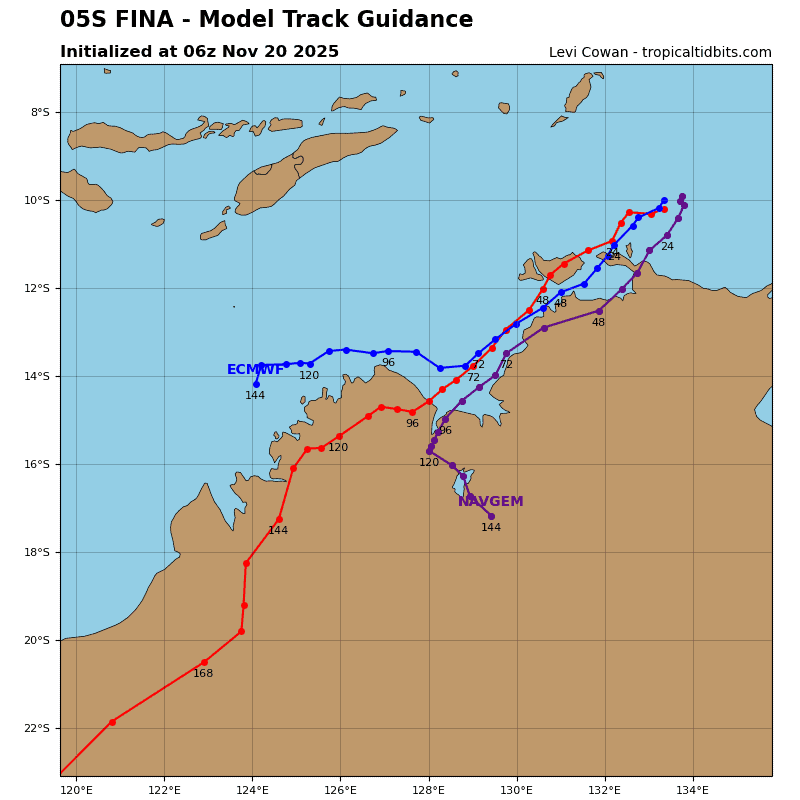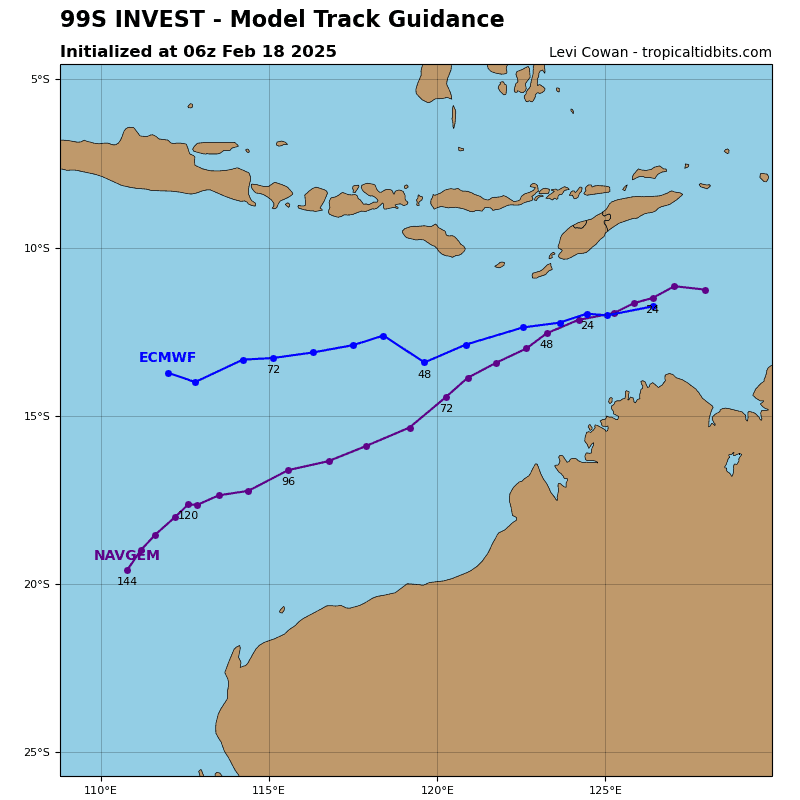Current Snapshot
For all the latest updates visit: DisasterAWARE
By PDC’s Senior Weather
Specialist Glenn James

The Pacific Disaster Center’s (PDC Global) Sunday, January 14, 2024, Tropical Cyclone Activity Report…for the Pacific Ocean, the Indian Ocean, and adjacent Seas
Current Tropical Cyclones:
Tropical Cyclone 05S (Belal)…is located approximately 45 NM west of St. Denis, La Reunion Island
Northeast Pacific Ocean:
The North Pacific hurricane season officially ended on November 30, 2023. Routine issuance of the Tropical Weather Outlook will resume on May 15, 2024. During the off-season, Special Tropical Weather Outlooks will be issued as conditions warrant.
The eastern Pacific basin hurricane season was above normal, with 17 named storms, of which 10 were hurricanes and eight of those major hurricanes.
From August 16 to 21, Tropical Storm Hilary brought widespread heavy rainfall and flooding to Southern California, with some areas receiving up to 600% of their normal August rainfall. Hilary resulted in the first ever issuance of Tropical Storm Watches and Warnings for the Southern California coastline by NOAA’s National Hurricane Center. In addition, the Center distributed key hazard focused messages for Hilary in Spanish through the agency’s new language translation project.
Hurricane Otis made landfall near Acapulco, Mexico, on October 25 as a category-5 hurricane, with sustained winds of 165 mph. Otis holds the record as the strongest land falling hurricane in the eastern Pacific, after undergoing rapid intensification in which wind speeds increased by 115 mph in 24 hours.
Central North Pacific:
The central North Pacific hurricane season officially ended on November 30, 2023. Routine issuance of the Tropical Weather Outlook will resume on June 1, 2024. During the off-season, Special Tropical Weather Outlooks will be issued as conditions warrant.
The central Pacific basin had a near-normal season with four tropical systems traversing the basin.
Hurricane Dora, a category-4 storm, passed south of Hawaii in early August, marking the first major hurricane in the central Pacific basin since 2020. The strong gradient between a high pressure system to the north and Dora to the south was a contributing factor to the wind-driven, fast-moving wildfires in Hawaii.
Western Pacific, Indian Ocean and adjacent Seas:
South Indian Ocean…
Tropical Cyclone 05S (Belal)
According to the JTWC warning number 6, sustained winds are 90 knots…with gusts to near 110 knots.
Despite increasing pressure from subtropical upper-level westerly flow over the western periphery of the system, tropical cyclone 05S continues to consolidate due in large part to strong poleward and equatorward outflow.
Animated enhanced infrared satellite imagery depicts a compact core with a formative eye. A color composite microwave image reveals spiral banding wrapping tightly into a small core surrounding a small, well-defined microwave eye feature.
TC 05S is tracking southward but is expected to turn sharply east-southeastward within the next 12 hours as the ridge weakens and reorients. The system should intensify to a peak intensity of 95 knots by 12 hours under generally favorable environmental conditions before dry air entrains into the western periphery.
As the system tracks east-southeastward along the southwestern periphery of the ridge, steady weakening to 70 knots is anticipated by 72 hours, due to increasing vertical wind shear and dry air entrainment.
After 72 hours, TC 05S will slow significantly within a competing steering environment with the subtropical ridge building to the west and east, effectively blocking eastward progression. As TC Belal slows and turns northeastward, vertical wind shear should decrease with re-moistening of the core allowing for slight re-intensification by 120 hours.
There’s an area of disturbed weather, being referred to as Invest 98S…located approximately 181 NM west-northwest of the Cocos Islands.
Animated multi-spectral satellite imagery and a microwave image depict a defined, exposed low-level circulation center (llcc) with persistent deep convection in the northwestern periphery that is beginning to build over the center.
Environmental analysis indicates that 98S is in a favorable environment for further development with good outflow aloft, low (10-15 knot) vertical wind shear, and warm sea surface temperatures.
Global models are in agreement that 98S will be quasi-stationary as it continues to develop over the next 24 hours.
Maximum sustained surface winds are estimated at 25 to 30 knots.
The potential for the development of a significant tropical cyclone within the next 24 hours is upgraded to high.
There’s a second area of disturbed weather, being referred to as Invest 99S…located approximately 102 NM east of Wyndham, Australia
Animated enhanced infrared satellite imagery and a microwave image depict an organized low-level circulation (llc) with deep convective banding in the western and northern quadrants. Animated radar imagery and surface observations support the current position near the coast and confirm a quasi-stationary motion over the past 12 hours.
Surface observations from Point Fawcett, to the north, indicate 20 to 25 knot westerlies with gusts as high as 40 knots, however, core winds are generally less than 15 knots. While the system is currently over land, it is very close to the coast and will be monitored for a possible transition over water.
Upper-level conditions are favorable with robust outflow aloft and low (10-15 knot) vertical wind shear. Frictional effects over land are hindering development but surface pressure values are low at 997 millibars.
Global models are in agreement that 99S will remain near the coast of Australia over the next 24-48 hours with little intensification.
Maximum sustained surface winds are estimated at 20 to 25 knots.
The potential for the development of a significant tropical cyclone within the next 24 hours is low.












